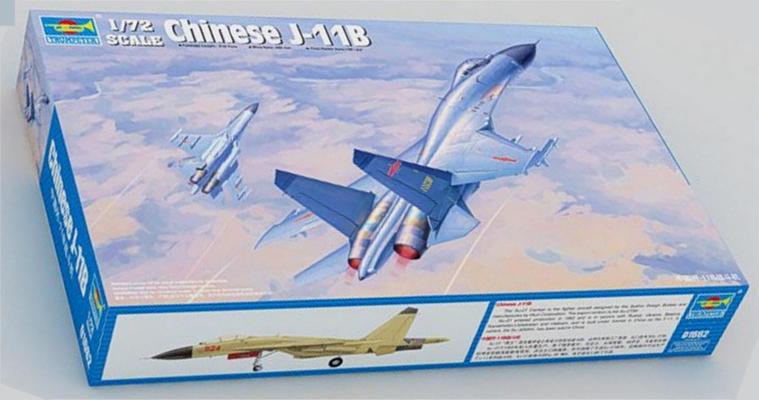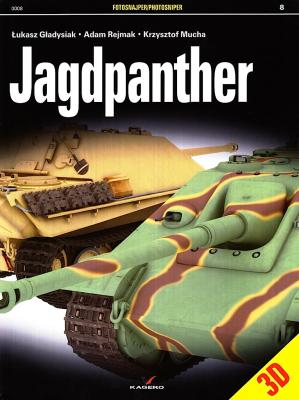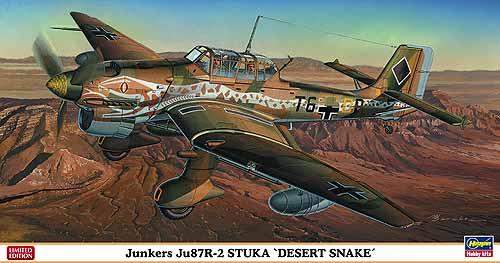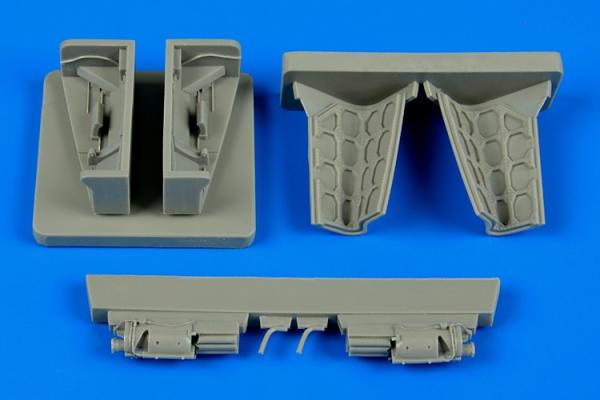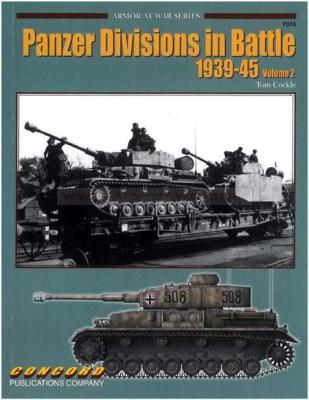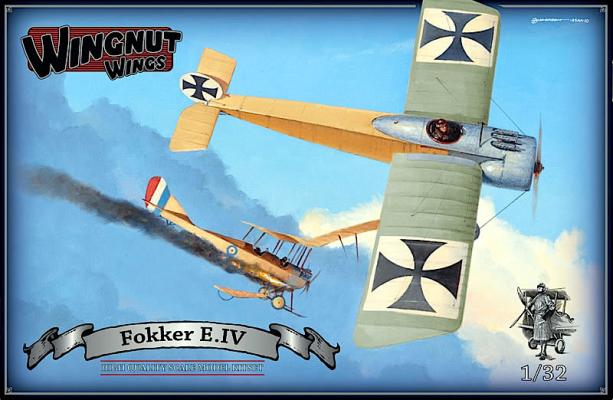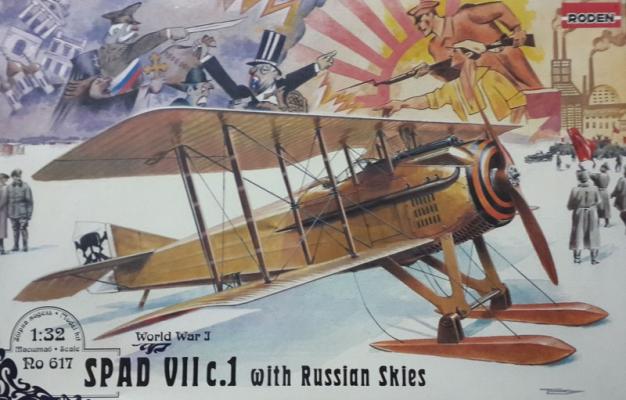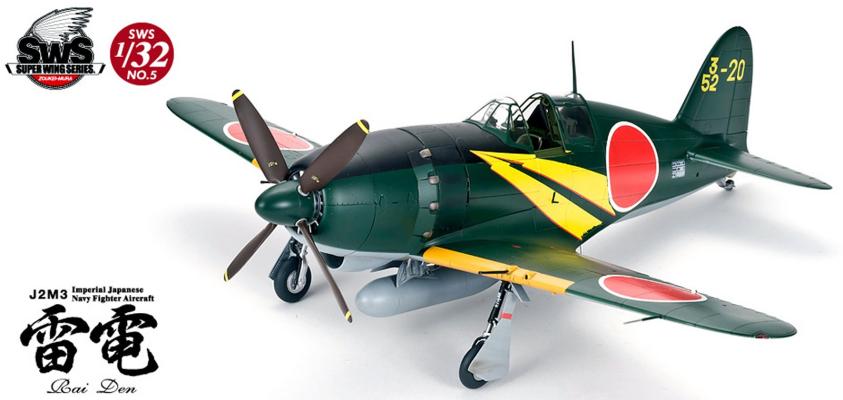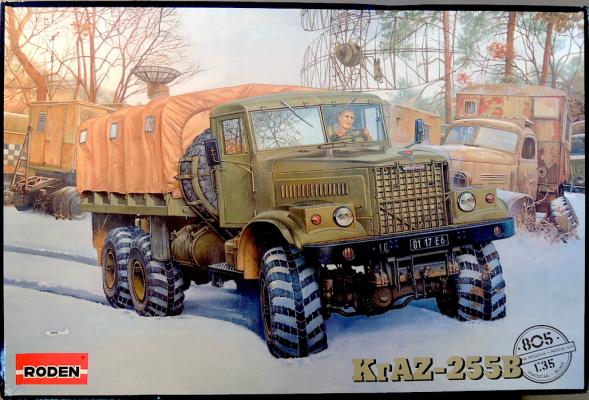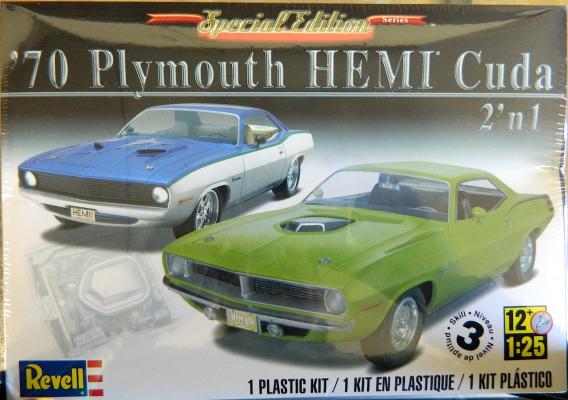The J-11B (NATO code name Flanker B+) is a Chinese version of the Sukhoi Su-27SK. The first 100 J-11A aircraft were built under license from Sukhoi. After those were completed, the license was suspended. Soon thereafter, the Chinese announced they had developed a multi-role version known as the J-11B.
What's New
History
As quoted from the introduction in the book "Self-propelled tank destroyers constituted an essential component of the Third Reich’s armored arm. Vehicles, which were especially useful in defensive warfare, in which the German army found itself after losing strategic initiative on the Eastern Front in the summer 1943 and following the Allied landing in Italy and France, with time began to effectively compete in armored sub-units with classic tanks. One of the largest vehicles of that type was Jagdpanther Sd.Kfz. 173, based on the chassis of the famous Panther tank".
The Stuka - one of the most notorious aircraft for World War II. Hasegawa gives us a kit of the R-2 version used in Libya during the North African campaign in mid-1941. The R version was an extended range B model that increased the planes range from 600km (372 miles) to 1530km (950miles) with the added fuel tanks on the wings.
There are 118 of light gray plastic and seven clear plastic parts on six sprues in this “Limited Edition” kit. We get a large decal sheet with markings for two aircraft used in North Africa. The instruction sheet is logically laid out on four sheets with two addition sheets being the black and white color / decal schemes. An interesting note is that on the box top and instruction sheet, the swastika is shown as a diamond on the tail, I guess they don’t want to offend anyone. I did have a few scratches on the clear parts, since they were not in a protective bag.
Items Reviewed
- Aires, #4605 (Gun bay), $16.50
- Aires, #4606 (Speed brakes), $16.50
- Quickboost, #48558 (Gun muzzles), $5.00
- Quickboost, #48566 (Antennas), $6.50
These upgrades ramp-up the level of detail for the Kittyhawk Jaguar 1. Quickboost is a subdivision of Aires, so it’s the same manufacturer with the idea of simple, lower cost additions to upgrade things not requiring a major aftermarket effort… such as antennas.
Concord Publishing, out of Hong Kong, is back again with another Armor At War series entitled Panzer Divisions In Battle 1936-45 by popular author Tom Cockle. Anyone familiar with the armor modeling literature and research will recognize this authoritative combination, and this latest release won’t disappoint.
Looking across my personal bookshelf of maybe 200 titles, I can spot several of Mr. Cockle’s books and I’ve familiar with many of his articles in some of the better armor magazines such as ‘Military Modeler’, ‘Military in Scale’, ‘Military Modelcraft International’, ‘FineScale Modeler’ and ‘AFV Modeller’. If you’ve been building armor models for any length of time, you’re probably familiar with his work as well.
Built on the principle of more is better, the Fokker E. IV was an attempt to improve on the legendary aircraft responsible for the “Fokker scourge” of 1915. First was the addition of a twin row 14 cylinder Oberursel engine which developed 160 hp. Then, at least in the prototype, three IMG machine guns were installed on the upper cowl firing through the propeller arc via an interrupter gear (which didn’t always work). These improvements seemed better in theory but combat revealed some shortcomings. The guns were reduced to two Spandaus since three machine guns which were prone to failures overloaded pilots. In addition, the weight of guns/ammo combined with a spinning mass of engine up front proved a handful. The allies by this time were producing very maneuverable aircraft that a wing warping design simply couldn’t match. The Fokker Einedeckers domination of the skies over the front was over by December of 1916.
Background
The sturdy French built SPAD VII c.1 made its appearance on the Western Front in mid-1916. Although many French pilots considered the SPAD VII to be inferior to the Nieuport 17 as a dogfighter, it nevertheless proved to be a reliable and rugged fighter and was more than a match for any Central powers aircraft it encountered. The real strength of this aircraft was its durability in a dive and that it could take a lot of punishment and still stay airborne. SPADs were soon in production in Great Britain, as well as in Russia. In the spring of 1917, Russia received 43 SPAD aircraft which proved to be popular with Russian pilots. This original batch of SPADs was supplemented by 100 more SPAD VIIs manufactured by the Dux factory under license.
NOTE: The Concept Notes have MSRP of $22.00
Part 1: Overview
The fifth Super Wing Series kit from Zoukei-Mura (ZM) is the Mitsubishi J2M3 Raiden (Allied code name ‘Jack’). I have the Hasegawa kit of the same aircraft in my stash, but when ZM kit arrived, I was very surprised at the size of the box. The kit box is substantially larger than the Hasegawa box, and it is full of plastic. Lots and lots of plastic. The lift-off box top is beautifully rendered in glossy artwork featuring the J2M3 of Lt. JG Yoshihiro Aoki, with views of the actual model on the sides.
Inside there are nine individually wrapped sprues of light gray plastic and two sprues of clear, with a total of 247 parts. There is a single decal sheet, a small sheet of paint masks, and the most comprehensive instruction manual I’ve ever seen (more on that in a minute). Also included with the review was the ZM Concept Notes.
Introduction
This is one ‘Bear’ of a truck and one bear of a kit! The KrAZ weighs twelve tons, has a payload of seven and a half tons, and is nicknamed ‘The Bear’. The kit will definitely not fall together out of the box on a Sunday afternoon. A difficult kit to assemble, it’s worth the effort and builds into one massive truck!
Background
Excerpt from the instructions:
I love kits like this ‘Cuda. Everything fit together very nicely with no flash at all.
Engine
The Hemi engine is a gorgeous unit to work with. Every part fit together just the way it should. You get a couple of options about the air cleaner setup. Rather than have a hole in the hood (kit provided) I chose to go with a dual 4 bbl. air cleaner.
Chassis
The exhaust pipes, rear differential, and front torsion bar are separate assemblies, and fit together very well. You get a choice of stock wheels and larger diameter 5 spoke wheels and tires. I used the gorgeously detailed stock wheels and added valve stems.
Interior
The interior features a floor unit with separate side panels that are very well engraved. The separate seats and console are wonderful pieces. I added flocking to my build.

